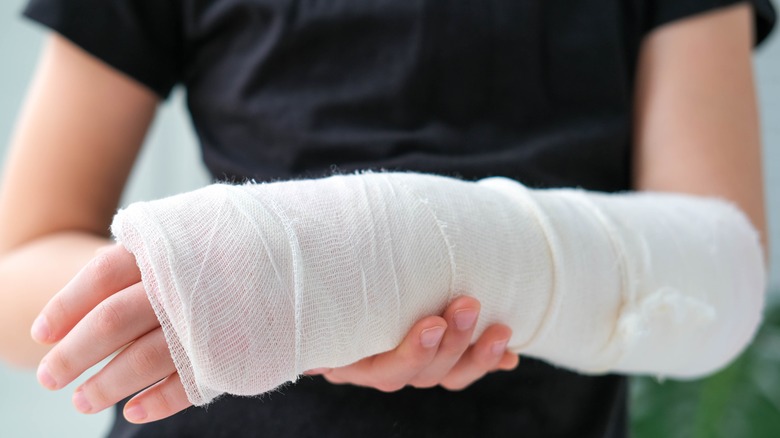
Introduction
Breaking a bone can be a distressing experience, whether it’s a minor fracture or a severe break requiring immediate medical attention. Knowing how to respond effectively to a broken bone is crucial for minimizing pain, preventing further injury, and promoting optimal healing. In this comprehensive guide, we’ll walk you through the steps to take when you break a bone, from initial assessment to treatment options. Whether you’re dealing with a simple fracture or a complex break, being informed can help you navigate the situation with confidence and ensure the best possible outcome for your recovery.
Assess the Situation
The first step after sustaining a suspected bone fracture is to assess the severity of the injury. Look for the following signs and symptoms:
- Pain: Sharp or intense pain at the site of the injury is a common indicator of a broken bone.
- Swelling: Swelling and bruising may develop rapidly around the injured area.
- Deformity: A visible deformity or misalignment of the affected limb or bone may be present.
- Limited Mobility: Difficulty moving the injured limb or experiencing loss of function is another telltale sign of a fracture.
Immobilize the Injury
Once you’ve determined that a bone is broken, it’s essential to immobilize the injured area to prevent further damage. You can immobilize a broken bone by:
- Splinting: Use a splint or improvised materials (such as cardboard or a magazine) to support the injured limb and prevent movement.
- Slinging: For upper limb injuries, a sling can help support the arm and minimize movement.
- Immobilization Devices: If available, use a prefabricated splint or brace to stabilize the fracture site.
Seek Medical Attention
While some minor fractures may heal with self-care measures, it’s essential to seek medical attention for a thorough evaluation and appropriate treatment. Visit the best orthopedic doctor in Calicut for expert assessment and management of your injury. A qualified orthopedic specialist can:
- Confirm the Diagnosis: A thorough physical examination and diagnostic imaging (such as X-rays) can confirm the presence and extent of the fracture.
- Provide Pain Relief: Your doctor may prescribe pain medication or recommend over-the-counter pain relievers to alleviate discomfort.
- Administer Treatment: Treatment options for bone fractures vary depending on the severity and location of the injury. Options may include casting, splinting, or surgical intervention for complex fractures.
- Monitor Healing: Your orthopedic doctor will monitor your progress closely and adjust your treatment plan as needed to ensure optimal healing and recovery.
Follow R.I.C.E Protocol
In addition to seeking medical attention, you can facilitate healing and manage symptoms by following the R.I.C.E protocol:
- Rest: Avoid putting weight on the injured limb or engaging in strenuous activities that could exacerbate the fracture.
- Ice: Apply ice packs to the injured area for 15-20 minutes at a time, several times a day, to reduce swelling and alleviate pain.
- Compression: Use an elastic bandage to apply gentle compression to the injured limb, which can help reduce swelling and provide support.
- Elevation: Elevate the injured limb above the level of the heart whenever possible to promote drainage of excess fluid and reduce swelling.
Follow Your Doctor’s Recommendations
Once you’ve received treatment for your broken bone, it’s crucial to follow your orthopedic doctor’s recommendations for recovery. This may include:
- Physical Therapy: Your doctor may recommend physical therapy exercises to improve strength, flexibility, and range of motion in the affected limb.
- Follow-Up Appointments: Attend all follow-up appointments with your orthopedic doctor to monitor your progress and address any concerns.
- Avoiding Risky Activities: To prevent re-injury, avoid activities that could put stress on the healing bone until you’ve been cleared by your doctor to resume normal activities.
Conclusion
Dealing with a broken bone can be a challenging experience, but knowing how to respond can make all the difference in your recovery. By assessing the situation, immobilizing the injury, seeking prompt medical attention, and following your doctor’s recommendations, you can take proactive steps to promote healing and regain function in the affected limb. If you’ve experienced a bone fracture, don’t hesitate to reach out to the best orthopedic doctor in Calicut for expert care and support. Your health and well-being are paramount, and with the right treatment and guidance, you can overcome this obstacle and return to your normal activities with confidence.








